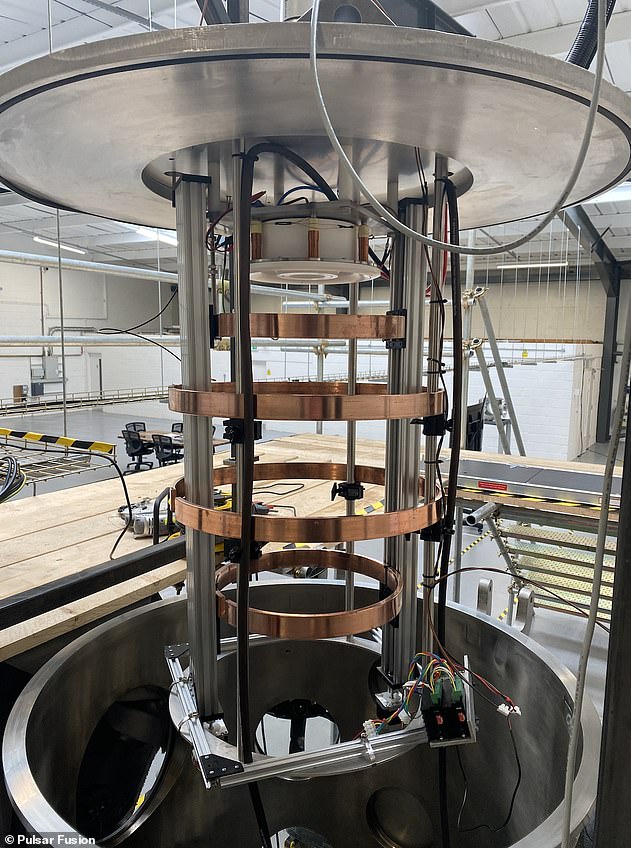
Title: Racing Pulsar Likely Broke Apart Enormous Galactic Filament, Unveiling Mysteries of Milky Way’s Magnetic Network
In an extraordinary cosmic event, astronomers have found compelling evidence that a moving neutron star—referred to as a pulsar—has damaged a colossal magnetic filament located near the core of our Milky Way galaxy. This finding, featured in recent research utilizing NASA’s Chandra X-ray Observatory, provides significant insight into the intricate and enigmatic magnetic formations that exist within our galaxy.
A Galactic Serpent Faces Disruption
The filament of interest, named “the Snake” for its elongated and winding form, extends about 230 light-years close to the center of the Milky Way. For many years, researchers have been fascinated by its peculiarly distorted shape, which includes two notable bends or “kinks” in its outline. These irregularities distinguished it from other similar radio-emitting filaments observed around the galactic core.
The advancement occurred when astronomers, merging data from Chandra’s X-ray space observatory and ground-based radio telescopes, identified the cause of the Snake’s deformation. At one of the “kinks,” they discovered high-energy X-rays consistent with emissions from a pulsar — the extremely dense stellar remnant of a massive star that met its end in a tremendous supernova explosion.
A Speeding Star on a Path of Impact
Pulsars are famous for their high speeds, often ejected from supernova remnants like cosmic projectiles. This particular pulsar seems to be darting through space at an astonishing velocity of 1 to 2 million miles per hour (1.6 to 3.2 million kilometers per hour). Such speed allows it to invade and alter existing galactic structures — which is precisely what astronomers suspect occurred in this instance.
As the pulsar barreled through the Snake, it likely disturbed the filament’s magnetic field — a crucial element that enables these elongated forms to transmit radio waves throughout the galaxy. The pulsar’s passage not only twisted the magnetic configuration but also resulted in a physical and observable break, distorting the Snake from its previously smoother form.
“This is akin to a bullet piercing a taut rubber band,” the research team explained. “The abrupt impact and disturbance from the pulsar reconfigure the flowing magnetic field, leading to a fracture point where energy is released in the form of X-rays and erratic radio waves.”
Unraveling the Milky Way’s Cosmic Framework
Filamentary formations like the Snake are believed to play significant roles in structuring the magnetic field at the galactic center — sometimes referred to as the Milky Way’s “cosmic framework.” These magnetic corridors guide charged particles and may also affect star formation processes. However, their complete character and purpose are still largely mysterious.
By examining how a swiftly moving pulsar encounters one such filament, scientists now possess a dynamic glimpse into the behavior of these structures under energetic strain. Importantly, the collision provides tangible evidence of how magnetic fields in space can be deformed, twisted, and even torn apart by compact objects.
Wider Implications for Galactic Studies
The ramifications extend well beyond a singular peculiar structure. The interaction between pulsars and magnetic filaments may shed light on the origins of other warped filaments and the lifecycle of galactic magnetic fields broadly. Furthermore, similar events could be taking place in far-off galaxies, rendering the Snake as a rare yet invaluable local case for astrophysical investigations.
The finding also emphasizes the significance of multiwavelength astronomy. Without integrating insights from both X-ray and radio telescopes, the link between the pulsar and the Snake’s rupture might have gone unnoticed.
In a universe brimming with enigmas, a solitary neutron star hurtling through space at incredible speeds has inadvertently revealed a hidden structure that influences our galaxy — contributing yet another piece to the intricate cosmic jigsaw of how the Milky Way operates and develops.
Support Independent Science Journalism
If discoveries like this ignite your curiosity and enrich your appreciation for space science, consider supporting independent journalism. Every contribution aids in ensuring ongoing coverage of the stories that broaden our comprehension of the universe.
Let’s keep exploring the cosmos — one fascinating galactic encounter at a time.